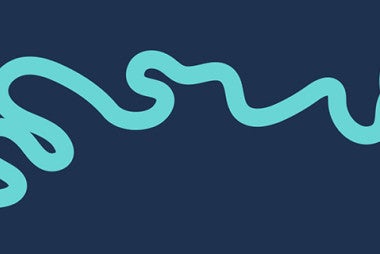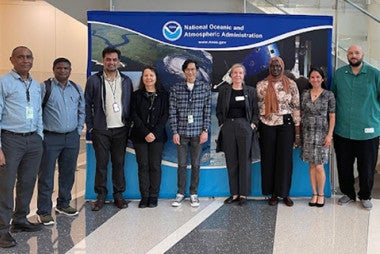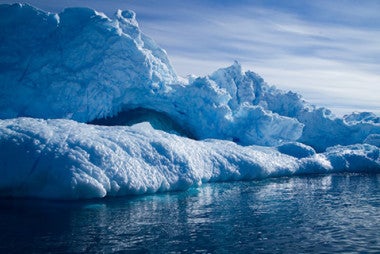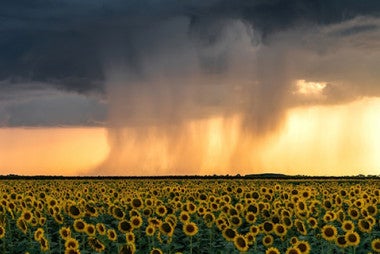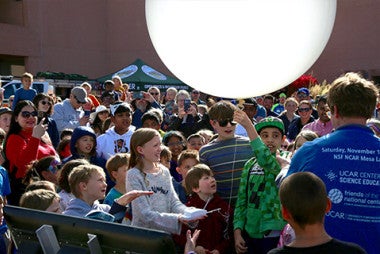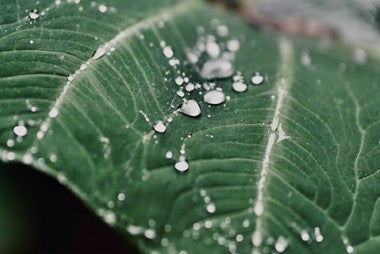NASA Jack Eddy Scholars
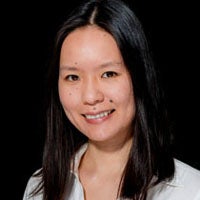
Natsuha Kuroda, NASA Jack Eddy Fellow.

Karanam Ramesh, NASA Jack Eddy Fellow.
One of the postdoctoral programs that CPAESS manages is NASA’s Jack Eddy “Living With a Star” Fellowship. The program matches early career PhDs with experienced scientists at U.S. research institutions. Hosting scientists mentor the postdoctorates during their two-year fellowships. The goal of the program is to train the next generation of researchers needed for the emerging field of Heliophysics.
Heliophysics embraces all science aspects of the Sun-Earth connection, and includes many of the basic physical processes that are found in our solar system, the laboratory, and throughout the universe. The study of heliophysics informs many critical and practical applications such as space weather impacts on earth weather and GPS signal interference.
Two of our Class of 2018 students are Natsuha Kuroda and Karanam Ramesh. We asked them some questions about their time as NASA Jack Eddy fellows and their research, and they were gracious enough to answer.
Karanam Ramesh received his PhD from Sri Venkateswara University. His fellowship was working with NCAR’s Anne Smith of the Atmospheric Chemistry, Observations & Modeling (ACOM) laboratory here in Boulder, Colorado on the Solar and Tidal Influence on Upper Atmosphere CO2 Cooling. Of his work he had this to say.
What is your PhD in and what inspired you to study this field?
As the terrestrial atmosphere is the region where we breathe, this field of research attracted me due to its importance for the existence of life. There is tremendous research going on lower atmosphere, but the knowledge on middle and upper atmosphere is inadequate. During Ph.D., my research work was mainly on the radiative, dynamical and chemical processes in the mesosphere and lower thermosphere (MLT). Also known as ‘ignorosphere’, this region is least explored by the research community due to the complications in probing. One of the interesting and striking features is the ‘mesospheric inversion layer (MIL)’. The limited sets of ground based and space-borne observations inspired me to investigate the challenging problem of formation of MILs.
What did you hope to discover with your postdoctoral work?
The anthropogenic increase of CO2 not only affecting the lower atmospheric climate but also the upper atmospheric processes. I did hope to investigate the impact of solar radiation and atmospheric tides on the upper atmosphere CO2 cooling which is poorly understood. I was also interested to investigate the impact of CO2 cooling on ozone and contraction of the atmospheric layers.
What did you end up discovering with your postdoctoral work?
I believe that I finished the proposed research work to some extent. As part of my postdoctoral work, I ended up with investigating the long-term effect of solar radiation, CO2, ozone depleting substances on the changes in (i) temperature and (ii) atmospheric tides in the middle and upper atmosphere. The results are expected to be revealed soon. The work is not yet completed and there is a lot more to explore.
Is there a pragmatic application to this sort of discovery?
Yes, the increasing CO2 enhances the infrared cooling and leads to declining thermosphere density. As a result, the lifetime of near cpaearth orbiting satellites and other hazardous space debris could increase. In addition, the thermospheric contraction causes downward displacement of ionospheric layers and significantly influences the electron density. Hence in view of the above consequences, there is a pressing need to investigate the long term behaviour of upper atmosphere CO2 cooling.
Anything you want to add?
The Jack Eddy postdoctoral fellowship gives an excellent opportunity to explore the potential research of interest. The upper atmosphere is always puzzling, influenced by solar energy from the top and various complex processes from the bottom. I am so excited learning by research and for the high impact discoveries in this field.
Natsuha Kuroda received her PhD from the New Jersey Institute of Technology. For her fellowship she chose to work with Dr. Martin Laming at the United States Naval Research Laboratory (NRL) in Washington, D.C. Kuroda’s project was on the Evaluation of the Magnetic Null Points as The Locations of The Solar Energetic Particle Seed Population Production.
What is your PhD in and what inspired you to study this field?
My PhD is in applied physics, specifically in solar physics. I had always some interest in space, and learned the fun of physics during my high school. When I was a physics major undergraduate, I learned about “space weather” and got specifically interested in what I am doing right now. I was hooked by the fact that things happening in the vast empty space outside of Earth’s atmosphere is changing every day and affecting our daily lives.
What did you hope to discover with your postdoctoral work?
I hoped to develop the method to predict the “seed population” of the harmful Solar Energetic Particles from the routine observation of the Sun. Currently, there is no direct observation of these “seed” particles, but they are thought to be extremely important in determining the severity of space weather events. I hoped to use my background knowledge I gained in radio and X-ray solar physics during my PhD to develop the new method in predicting these seed particles.
What did you end up discovering with your postdoctoral work?
My work is unfinished, and I am planning to continue the project at where I was hosted. I discovered though that the energetic electrons, which can be observed in radio wavelength, has still a lot more to be explored at the space where it wasn’t really focused before – at some height away from the vicinity of sunspot where “everything” has been thought to happen when events such as solar flares occur.
Is there a pragmatic application to this sort of discovery?
Yes, the Solar Energetic Particles is one of the most harmful of space weather events as it can break the satellites in orbits and harm the astronauts. So its forecasting is crucial to modern society.
Anything you want to add?
I feel that the field of space weather is very special – it lets you work with the wonders of the universe while being critically needed by the society (you usually don’t get both, in my humble opinion). I feel lucky to have found passion in this field.
Thank you both so much for giving us insight into your research Karanam and Natsuha. We wish you all the best as you continue your work and make new strides in this critical, emerging field.
